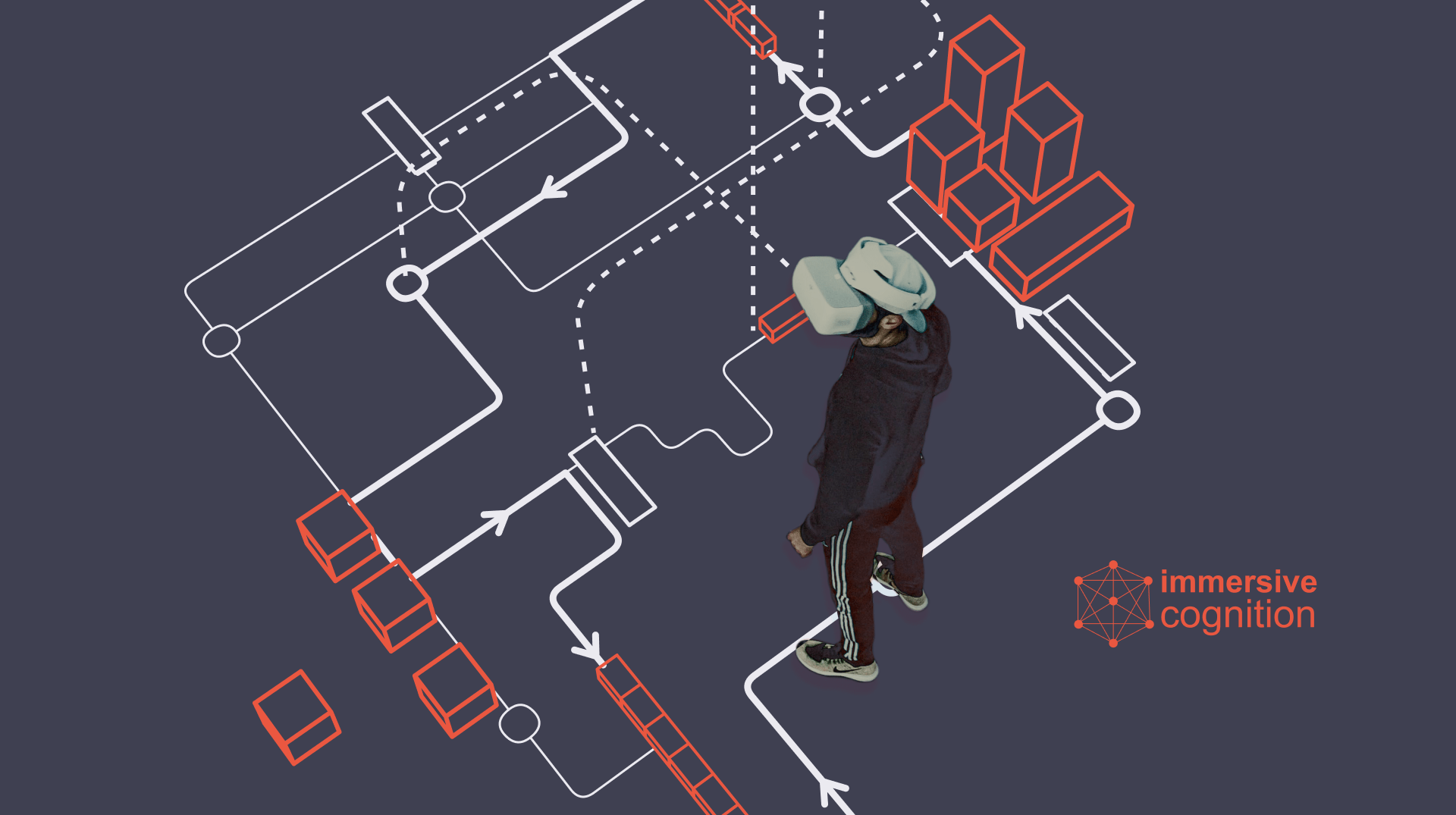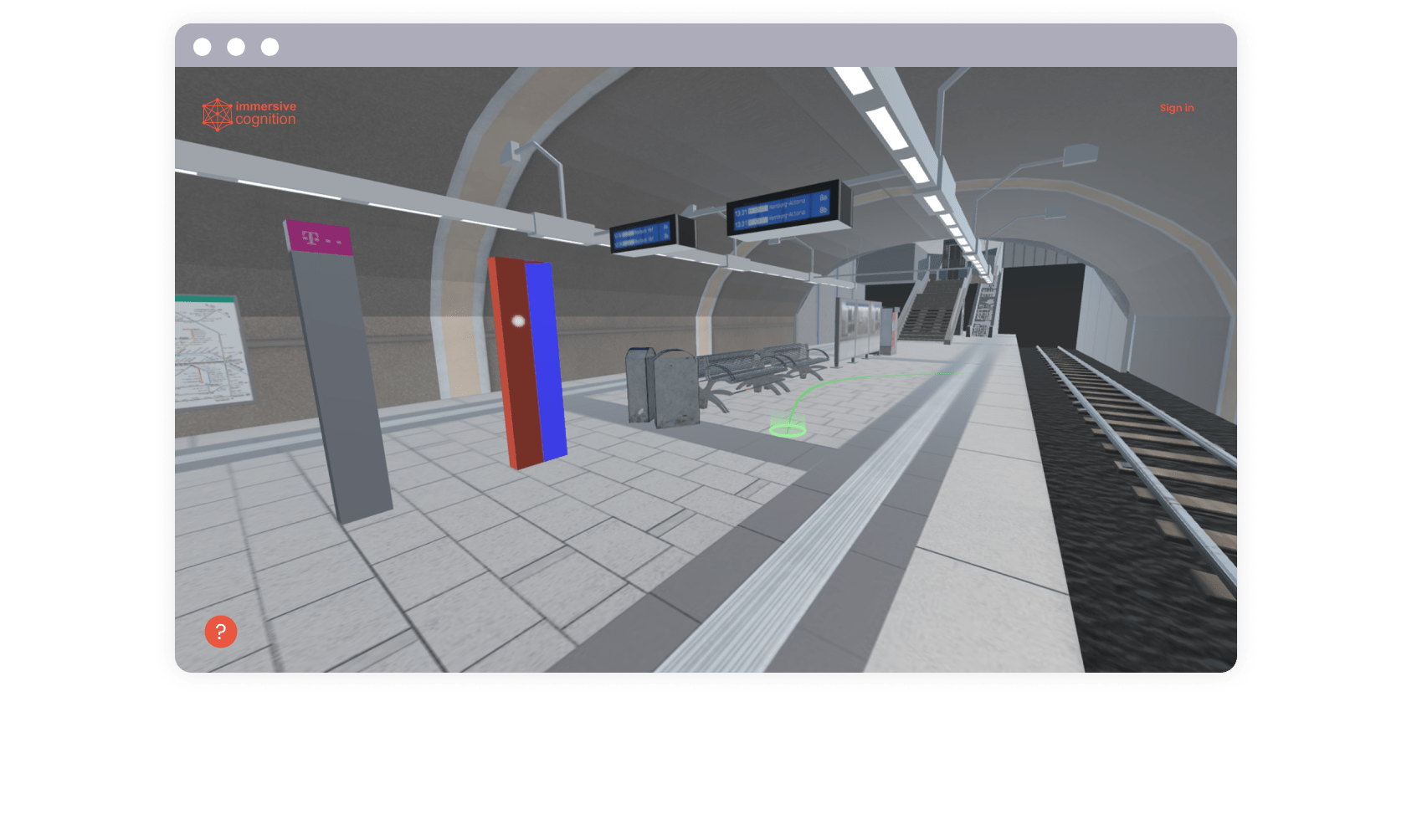Global implementation through realtime technology
cognition design
The Cognition Design project started as a vision in virtual reality and evolved into a state-of-the-art web platform accessible from any device. The weltfern team has increased visual quality and performance through a unique workflow tailored to the pipeline. Research with eye-tracking technology requires extreme performance, the unique challenge was to optimize the scenes for it. The project grew into a more global research project with the various great partners and funders. Together a completely new approach to research on the web was established.
The project “Cognition Design” (HA project no. 817/19-137) was funded by the State of Hesse and the “House of Logistics and Mobility” (HOLM) as part of the measure “Innovations in Logistics and Mobility” of the Hessian Ministry of Economics, Energy, Transport and Housing.
Share innovation

A number of studies have shown how VR users can believe that the body they see in the VR scene in place of their real body is treating their own body and that this can change their perception.


If the user has the feeling of being present in the virtual space, representations of people or objects, should be treated as if they were real. The interaction between embodiment, social action and its effects on users is a very active field of research today.


The change or new planning of infrastructure usually extends over long periods of time. In order to involve future users in the development processes as early as possible, new forms of representation are needed that can incorporate the relationship between space, lighting, movement and information.

Immersive VR systems have long been of interest as interfaces because the person is usually captured by the displays, with these displays presenting from a first-person perspective. Users of VR systems can control the display by moving their body. In virtual environments that mimic plausible real-world situations, users can exhibit similar behaviors as they would in a similar real-world situation, a phenomenon sometimes referred to as presence. As a result, many evaluations of VR have focused on how to maximize presence response, as this is believed to be the key determinant of VR success.
RESEARCH
VR TRAIN STATION
For example: at which point on the platform do passengers prefer to wait for the S-Bahn? And why just there? Can we identify places that are particularly preferred by many passengers? Such questions behavior on the platform in a specific situation (waiting) help to determine the perceptions and needs of travelers in mobility processes and to assess the quality of stay in different zones of a mobility space.


Future-oriented & sustainable
MOBILITY CONCEPTS
At Cognition Design, mobility design at the HfG and cognitive psychology at Goethe University are working together to test the perception of users in virtual mobility stations. Eye-tracking was used to find out how travelers orient themselves in underground mobility spaces, especially in VR simulations. For this purpose, ten suburban train stations were set up virtually, in which the degree of reality, architecture and other variables such as light or color can be changed.
SERVICES / METHODS / NEEDS
THE DESIGN OF MOBILITY
The needs of different users are taken into account in the design of mobility services, and specific design methods are developed based on these needs. The design research focuses essentially on the emotional factors in the perception of mobility offers with the aim of positively influencing the attitudes and behaviors of users. Finally, design guidelines are being developed that focus on the entire structure of the mobility system in order to promote sustainable infrastructures in this way. Design is the integrating element, as it mediates between people and mobility systems through design decisions and influences user experiences.
3D ONLINE
Research online carries its price! 128 MB is the maximum for the file size of the whole scene! However, thanks to the experience our weltfern team gained with Adidas and our own production plattform augmentable.online, we were able to overcome this challenge. Texture baking, remeshing and a sophisticated pipeline have brought us to the goal of ensuring visual quality and believability.
Follow us
Follow us
Follow us
Follow us










 info@weltfern.com
info@weltfern.com